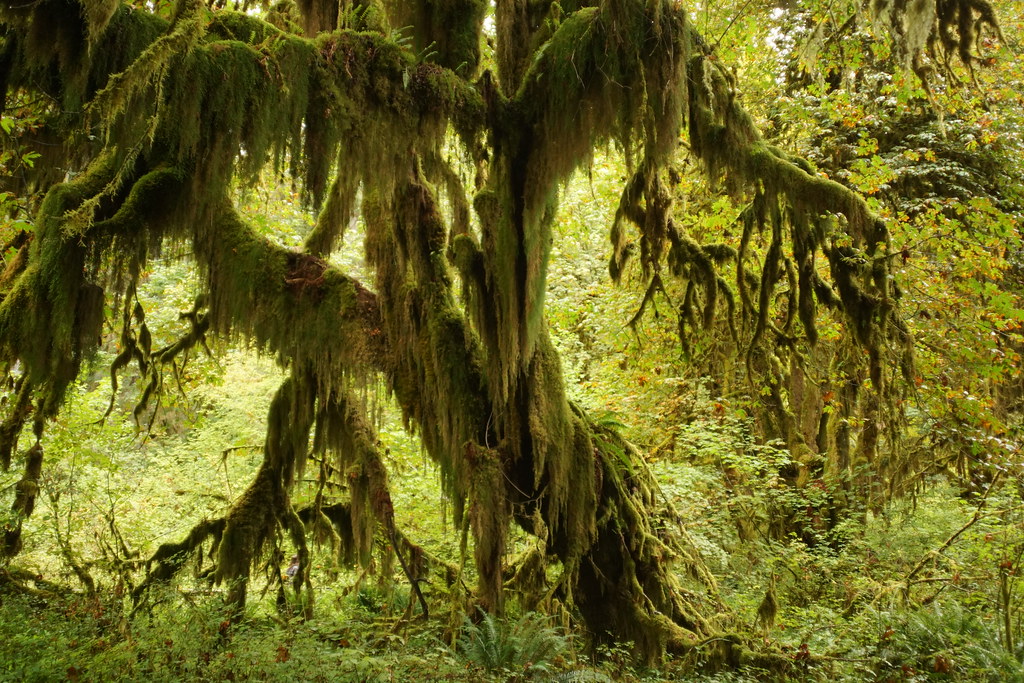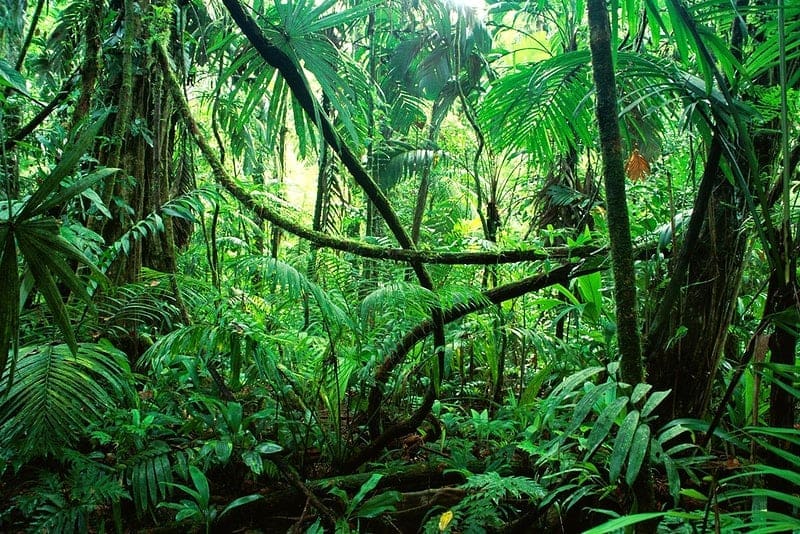| Rainforests: the mere mention of the word conjures marvelous visions of lush, steamy jungles full of resplendent parrots and birds of paradise, butterflies on passion flowers, stalking jaguars, poison dart frogs calling beneath sprawling canopies from which dangle sprays of orchids and tangles of lianas. Maybe you imagine Panama, Cambodia, Congo, Borneo, or the Amazon, the grand dame of rainforests. In every instance, tropical rainforests showcase spectacular biodiversity, play vital ecological roles in water cycling and carbon sequestration, and are worthy of all their praise. Here in western Washington, we know another kind of rainforest, the temperate rainforest, that is no less magnificent. Temperate rainforests are ecosystems defined by two variables: temperature and precipitation. A temperate climate has an average annual temperature between 39 – 54 degrees Fahrenheit (4 – 10.5 degrees Celsius). Warmer temperatures yield a tropical rainforest (see above), and colder regions tend to be drier or receive their precipitation as snow. Speaking of precipitation, one can’t have a rainforest without rain, at least 55 inches of the stuff each year to be exact. All along the Pacific coast from Alaska to northern California are arrayed the Pacific temperate rainforests, collectively comprising the largest temperate rainforest region in the world. Coastal Washington is situated in the Central Pacific coastal forests, a sub-region of the Pacific temperate rainforest stretching from southern Oregon to southern British Columbia. |
 |
| The prodigious rainfall this area receives results from its proximity to the ocean, atmospheric wind patterns, and topography. On the west side of the Olympic Peninsula moisture-laden air carried in from the Pacific Ocean dumps rain as clouds collide with the mountains and are forced upwards. The results are truly monumental. The Hoh and Quinault rainforests climb up the western face of the Olympic Mountains from around 400 up to 2500 feet in elevation along the river drainages for which they are named. These forests are dominated by Douglas firs and Western hemlocks, iconic in luxuriant robes of fern and moss. In the Hoh, the average annual rainfall is 135” annually, compared to the paltry 37” Seattle gets! In the Quinault Valley, you can find the largest Western red cedar, Sitka spruce, Alaska cedar, Western hemlock, mountain hemlock, and 5 of 10 of the biggest Douglas fir trees. The sheer size of trees aside, these epically productive forests host a variety of wildlife, some of which are found nowhere else, including Olympic black bears, Roosevelt elk, northern spotted owls, Pacific tree frogs, and who could forget, banana slugs. |
 This year on the 22nd of June is the 6th annual World Rainforest Day, a day of recognition founded by the Rainforest Partnership. This year the message is The Time is Now, and the free global summit open to everyone will feature efforts being made by many organizations to conserve rainforests around the world and bring international attention to the critical functions played by this ecosystem. |



Recent Comments